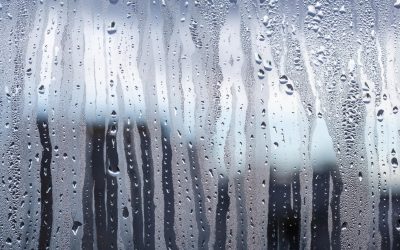Penetrating damp is a pervasive issue that plagues many homes and buildings. Understanding its nature, causes, and remedies is crucial for maintaining a healthy and structurally sound environment.
What is Penetrating Damp?
Penetrating damp refers to the ingress of moisture through walls and ceilings from external sources such as rainwater, leaking pipes, or poorly sealed windows and doors. Unlike rising damp, which originates from ground-level moisture, penetrating damp affects higher parts of buildings and spreads horizontally.
Defining the Phenomenon:
Penetrating damp occurs when water breaches the external protective layers of a structure, seeping into the inner surfaces. It manifests as damp patches, water stains, or peeling paint on walls and ceilings. Failure to address penetrating damp promptly can lead to extensive damage and health hazards.
Causes of Penetrating Damp
Understanding the root causes of penetrating damp is essential for effective mitigation.
External Factors:
External factors such as heavy rainfall, wind-driven rain, and high humidity levels contribute to penetrating damp. Faulty guttering, blocked drains, and defective roof tiles exacerbate the problem, allowing water to infiltrate building materials.
Building Structure:
Deficiencies in the building structure, such as cracks in walls, gaps around windows, and poorly maintained brickwork, provide pathways for water intrusion. Inadequate waterproofing membranes and insufficient ventilation also contribute to the ingress of moisture.
Effects of Penetrating Damp
The effects of penetrating damp extend beyond aesthetic concerns, posing significant risks to both property and occupants.
Structural Damage:
Prolonged exposure to moisture weakens building materials, compromising structural integrity. Rotting timber, corroded metal fixtures, and crumbling masonry are common consequences of untreated penetrating damp, necessitating costly repairs.
Health Implications:
Penetrating damp creates an ideal environment for mould and mildew growth, triggering respiratory problems and allergic reactions in susceptible individuals. Damp and musty odours further diminish indoor air quality, posing health risks to occupants.
How to Identify Penetrating Damp
Early detection of penetrating damp is crucial for mitigating its impact and preventing extensive damage.
Visual Signs:
Visible signs of penetrating damp include damp patches, water stains, and dark mold growth on walls and ceilings. Peeling wallpaper and blistering paint are indicative of moisture ingress, warranting further investigation.
Damp Meter Testing:
Utilising a damp meter allows for accurate moisture measurements in affected areas. High moisture readings indicate the presence of penetrating damp, prompting the need for remedial action.
Preventive Measures
Implementing preventive measures is key to safeguarding properties against the ingress of moisture.
Exterior Maintenance:
Regular maintenance of guttering, downpipes, and roof surfaces prevents water accumulation and potential leaks. Sealant application around windows and doors and repointing of brickwork fortify the building envelope against water intrusion.
Interior Precautions:
Maintaining adequate ventilation, especially in moisture-prone areas such as kitchens and bathrooms, mitigates condensation buildup. Installing damp-proof membranes and using breathable wall coverings help combat the effects of penetrating damp indoors.
Treatment for Penetrating Damp
Addressing penetrating damp involves a combination of surface treatments and structural repairs.
Surface Treatments:
Applying waterproof coatings and breathable masonry paints to affected surfaces creates a barrier against moisture ingress while allowing trapped moisture to escape. Silicone-based sealants effectively seal gaps and cracks, preventing water penetration.
Structural Repairs:
Repairing damaged roof tiles, replacing defective guttering, and repointing mortar joints restore the integrity of the building envelope. Structural interventions such as cavity wall insulation and damp-proof course installation provide long-term protection against penetrating damp.
FAQs
Can penetrating damp affect my health?
Yes, prolonged exposure to penetrating damp can lead to respiratory issues and exacerbate existing health conditions, particularly in individuals with allergies or asthma.
How can I prevent penetrating damp?
Regular maintenance of the building exterior, including roof, gutters, and external walls, is essential for preventing penetrating damp. Ensure proper ventilation and address any signs of moisture ingress promptly.
Is penetrating damp covered by home insurance?
Home insurance policies may cover damage caused by penetrating damp, depending on the extent of the damage and the terms of the policy. It’s advisable to consult your insurance provider for clarification.
Can I fix penetrating damp myself?
While surface treatments such as applying waterproof coatings can be DIY projects, addressing underlying structural issues may require professional assistance. Consulting a qualified contractor ensures proper diagnosis and effective remediation.
How long does it take to repair penetrating damp?
The duration of penetrating damp repairs varies depending on the extent of the damage and the chosen remediation methods. Minor issues can be resolved relatively quickly, while extensive damage may require weeks or even months to rectify.
Will penetrating damp return after treatment?
Properly conducted repairs and preventive measures significantly reduce the likelihood of recurring penetrating damp. However, ongoing maintenance and vigilant monitoring are essential to prevent future issues.
Conclusion
In conclusion, understanding the intricacies of penetrating damp is paramount for protecting properties and ensuring the well-being of occupants. By addressing the root causes, implementing preventive measures, and undertaking timely repairs, property owners can effectively mitigate the impact of penetrating damp and maintain a safe and healthy indoor environment.
Contact us today to book a damp survey today.


